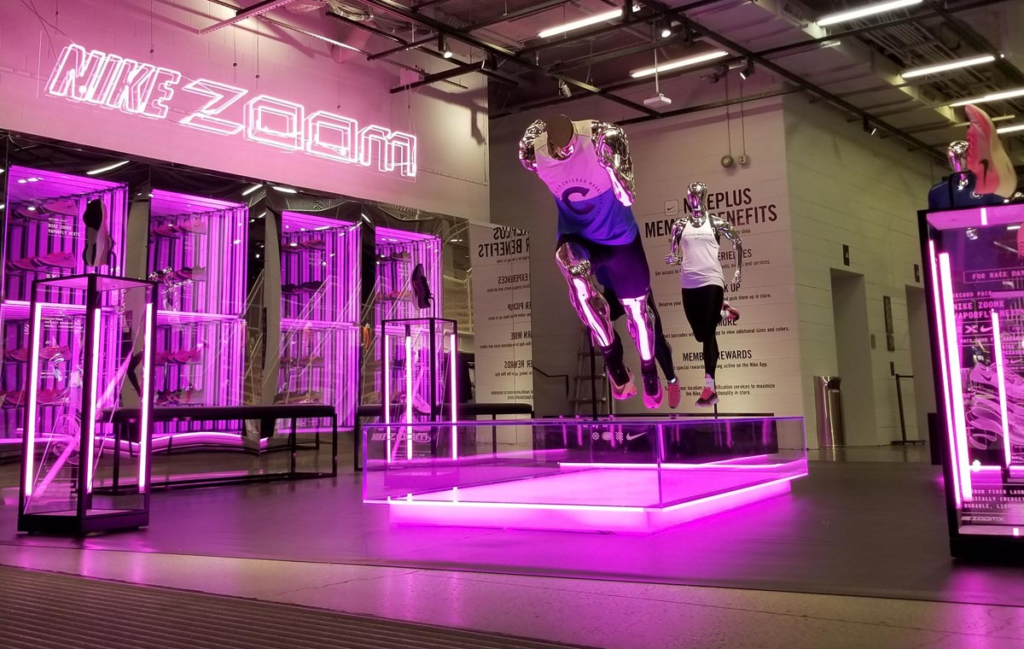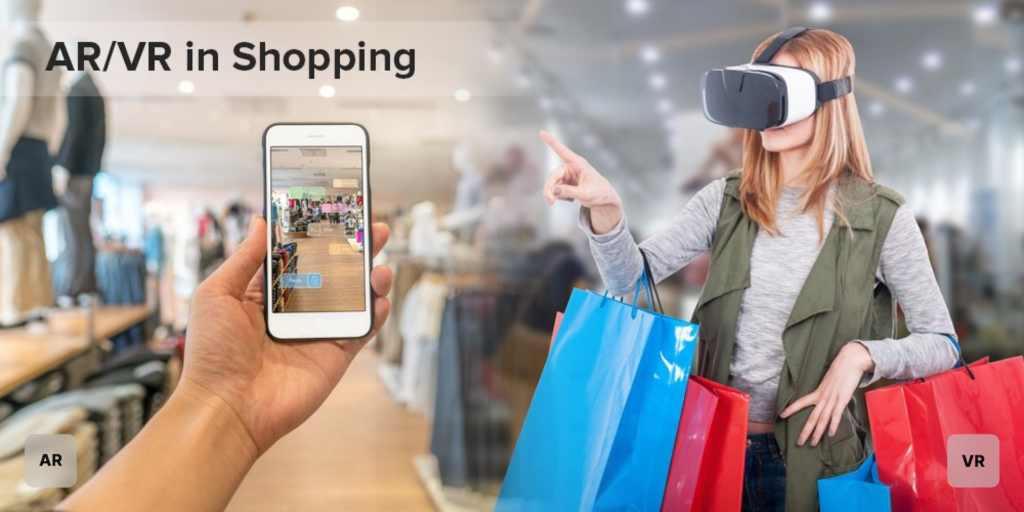Retail is on the precipice of a renaissance, which will be characterized by great advancement and economic rebirth.
To get there, businesses need to start by acknowledging that no matter where they operate in the world there is a pressing need to exercise commercial discipline. And a recognition that the metrics of yesterday’s retail will not fuel the growth of tomorrow. However, this non-negotiable commercial pragmatism must be balanced with an appreciation that while exciting technology innovation still dominates C-suite and elevator conversations, the next big evolution is an imminent renaissance of hyper-experiential retail.
The Commerce Department in the US announced that consumer spending rose in February by its biggest margin in a year, while in the UK inflation was at its lowest level in two years as retailers compete for customers, here in Canada RBC reports that “consumer spending data marked a stronger start to Q2 than we expected. But one month does not make a trend. We are cautiously optimistic that consumer activity will improve this year- as adjustment to higher rates hits households less hard in 2024.”. However, whether conditions are favorable or challenging, brands simply must perform, and perform well, in an environment where there are more competitors than ever before.
Beyond this, consumers can easily be described as fickle
For example, if they are not happy with one experience they’ll move on and there are dozens, hundreds, and if we think globally, thousands of other brands waiting in line to capitalize on their spend. While many consumers are traveling far and wide to experience the best from all around the world, TV and content across platforms is resetting what consumers want, need, and expect from brands by exposing them to new lifestyles and ways of living.

An example of how this brand we all know is re-inventing how customers experience their products…..museum exhibition style!
Retail dominated at CES earlier this year, and almost all conversations revolved around artificial intelligence (AI) technology to drive seamless and frictionless retail, personalization, and much more. Technology is enabling user experience that wouldn’t have been imagined a decade ago. However, rather than being seen as an end, technology should be understood as the means for giving consumers what they want.
The NRF’s Retail’s Big Show this year showcased the best of technology, yet some key themes to emerge were that customer interaction in-store is as imperative as the transaction and that Generation Alpha, while not yet capable of earning money, has immense influence on their parents who do. While these true digital natives are technologically adept, they value in-store and physical experiences. Do not for a second underestimate their influence on their parents.
Gen Z, the first generation to have had a smartphone their entire lives, are also known to be digitally savvy.
While generalizations across entire generations are never helpful, it is widely agreed that this cohort researches brands and products online but – and here’s a surprise to those focusing only on technology – according to global management consulting firm Kearney, 81% of Gen Z prefers to shop in stores, while more than half of them do so because they say it helps them disconnect from the digital world.
All the signs are there for retailers willing to see them. Our two youngest generations are telling us what they want. What does this look like in practice? Amazon launched its Just Walk Out technology a mere six years ago, accompanied by hyper-advanced ceiling-mounted cameras, shelf sensors and algorithms. Amazon has announced it is removing the technology because it alienated shoppers who felt that a trip to the grocery store felt like they were stepping into a high-tech vending machine. This speaks directly to what consumers want from an in-store experience.
Retail’s next big opportunity is hyper-experiential retail, and we are at the precipice of this explosion of customer experience driving consumer choice and loyalty because of a confluence of a few big forces at play.
Shifting of the tectonic plates
The first is technology, which is enabling innovative and effective experiential retail. Another is that as the pandemic fades into memory, people want to be out, they want to spend moments with other people outside of their homes. According to insights from Canvas8 looking into what they call experience hunters, 58% of consumers believe that immersive experiences will influence their next purchase. In other words, six out of ten people place a high value on how retail makes them feel.

Artificial Intelligence will be used to supplement customers shopping experiences.
The third is that there is no longer a clear line between where retail starts and where it ends. Almost everything is a retail experience now, no matter if you’re at an airport, a fuel station, or commuting – retail is everywhere, meaning there are hundreds of different competition points for retailers across millions of different journeys. The last big force is that e-commerce has slipped into a holding pattern. Effective, efficient, and convenient, but boring and predictable. Influencers have taken over product choice even leading the conversations on behalf of brands. But consumers want more fun, they are seeking discovery – the magic of retail past.
This all has very real permutations for brands that have built their market presence on legacy retail experiences. They need to innovate quickly to keep up with pioneers who will keep raising the bar of experiential shopping. In addition to this they will be competing directly with startup brands and businesses that were direct-to-consumer, but are moving into the realm of retail experience without the baggage of the past. This area alone will likely see exponential growth in the next few years.
From purpose to experience
Defining brand purpose has been front and center for a number of years, which is right because purpose is foundational. However, purpose doesn’t tell you everything about how a customer will experience a brand. In light of this, brands will be challenged to define how their brand is experienced across all dimensions. In other words, not just their voice, not just the words that they’re using or their personality and identity, but how they’re physically coming to life, how they’re meeting customers at the important moments across the retail journey and creating value, intrigue, excitement, attraction, and desire.

This type of discovery is crucial for brands to drive longer-term loyalty in a hyper-competitive landscape. It starts with dimensionalizing the brand, in other words thinking about how it should look, feel, sound, smell, and taste – this is the cornerstone of an experience vision. Once a brand has done this it needs to be precise in how it chooses the moments where it wants to explode into life for consumers. Much of this precision will come from a deep understanding of consumer insights and experience barriers and how to overcome them, but also from creativity, imagination and innovation – a true path to differentiation.
Agencies and consultants need to help retailers by mapping out a diagnostic journey of consumers. This enables brands to understand a consumer’s entire journey, not just within an experience, but within the moments and choices leading up to an experience. How do they make choices, what drives them, what motivates them, what distracts or pushes them away from brands? When do they make these choices?
The best technology can aggregate multiple data sources to help diagnose brand issues as well as predict where and why brands are losing consumers along their journeys. It is important for retailers to find answers about where they are not maximizing consumer desire in key moments. However, landing on the right answers requires asking the right questions.
The seeds to these questions were planted at CES earlier this year, when some of the biggest retailers and tech giants in the world made it abundantly clear that their vision of sustainable, long-term growth lay in marrying technology with humanity, signaling a return to appreciating the value of humans and how we feel. We all know what experiential retail is, and the world is awash with various case studies of highly successful campaigns. Expect this to turn up a notch to become hyper-experiential. Especially that according to Canvas8, quoting Unibail-Rodamco-Westfield, 8 in 10 people globally are willing to pay more for elevated shopping experiences.

Genuine human connection and personal interactions are going to drive retail growth, innovation, and brand loyalty this year and beyond. Brands need a plan to thrive in this renaissance of hyper-experiential retail. The rules of the past aren’t going to work in the new era of modern retailing where consumers are telling us what they want, we just need to listen, see around the corner and bravely walk through the door. For the Silo, Rhonda Hiatt
Rhonda is the global CEO at Clear, part of M&C Saatchi. Featured image: Galleria Vittorio Emanuele in Milan Italy- using historic storefronts and buildings in newly realized enclosed mall retail spaces.
